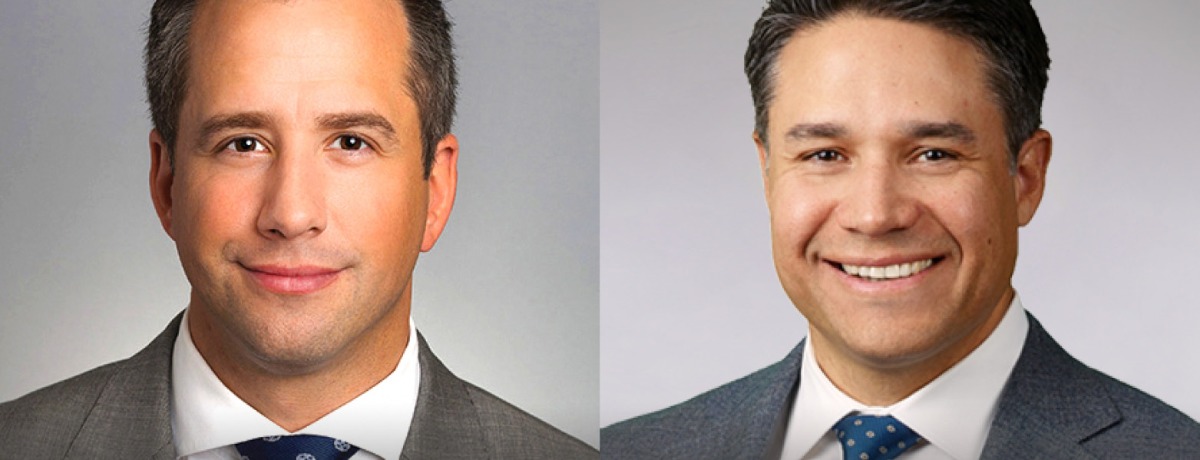Kurt Sarno and John-Paul (JP) Bogden are partners at Blakes, the 2019 “Law Firm of the Year” recipient for Leveraged Buyouts and Private Equity Law in Canada. Speaking with Best Lawyers CEO Phillip Greer, Sarno and Bogden discuss the changes coming to their field and technology’s impact on mergers and acquisitions more broadly.
What inspired you to focus your expertise in the leverage buy-outs and private equity sector?
Kurt Sarno: I started focusing on a mergers and acquisitions practice and quickly realized that in Canada, the volume of private M&A outpaces public M&A. And in that space, noticing the import of U.S. trends to Canada, private equity was a sector of the private M&A market that I thought would have a long future. So, I tried to find roles in private equity transactions as a junior lawyer, and then hone my specialty throughout my career here at Blakes and practicing, for a short stint, down in the United States.
And JP, what brought you into this sector?
JP Bogden: I did a private equity buyout deal quite early in my career and was captivated by the use of leverage to generate returns for the fund and management alike. I also realized that working with private equity professionals is a bit of a treat from a service provider perspective: They're knowledgeable, sophisticated individuals who do deals for a living.
Do you see any trends or changes continuing to happen in this field over the coming years?
Sarno: I think a trend that I can say is continuing is the existence of a very friendly sellers’ market in private equity transactions. The abundance of capital on the buy or investment side and the shallow pool of assets available for that capital to be deployed to has made it very easy for sellers to get deals done at very high multiples. I think in most cases, sellers are tending to engage sophisticated financial advisors to run processes, which has resulted in exits without very much post-closing sale- side risk, including fewer post-closing indemnities, which had always been a hallmark of private M&A. Then on top of that, you layer on the recent development and usage of rep and warranty insurance in Canada. It's really tying a very seller-friendly package in a pretty bow.
Bogden: Part and parcel with the seller-friendly market, we are seeing an importation of what we would have typically considered to be U.S.-style deal terms into purely domestic transactions. For example, we are seeing no-seller indemnity policies, where the seller is not paying any portion of the retention amount for the rep and warranty insurance policy, and also seeing time limits imposed on fundamental representations which historically used to run forever.
Have there been any important policy changes, locally or globally, that have impacted your firm's work in this field?
Sarno: I wouldn't say policy. I think I can categorize it as strategic changes from large institutional investors: The pension funds, endowment funds, the large pools of capital around the world have, I think, allocated a greater portion of their assets to private equity, which has produced an increased volume of supply of capital available for deployment. This ties into the prior point we discussed about it contributing to a very seller-friendly market.
That, I think, coupled with a competitive advantage for private equity as compared to public markets that continue to be heavily regulated, if not increasingly more regulated, has made it a very attractive space into which private equity investors are putting their capital.
Bogden: The point I was going to make is a more granular one. A relatively recent change to Canadian income tax laws have made a so-called hybrid structure (where both shares and assets are sold) less appealing. We're seeing a whole lot less of those deals, which from a deal execution perspective, is welcome news because they're complicated deals.
A trend that I can say is continuing is the existence of a very friendly sellers’ market in private equity transactions.
In what ways have changes in technology impacted your firm's work in private equity?
Bogden: Technology is getting better and better at helping M&A deals get done. There's a software package we use called Closing Folders, which I would have killed for as a junior lawyer, that lets us assemble signatures and closing sets without any wasted steps at all. It's a collaborative tool that can be shared by deal counsel from all sides. That's been a great help in getting things done more efficiently.
Sarno: Other technology solutions that are used in transactions as a whole, not only in mergers and acquisitions in general but also in private equity buyout and investment transactions, include diligence related software, software that allows the review of large volumes of documents for specific provisions that are relevant to the structure of the transaction and online platforms that allow sellers to make available their records for review, which facilitate and speed up due diligence.
[RELATED: Voting for the 2020 Edition of The Best Lawyers in America begins February 13]
Is there anything else you want to share about your practice area or other groups that your firm is particularly proud of?
Bogden: There's one thing that I always mention when asked about what differentiates us from our peer firms, and that's the strength of each of our offices in our major Canadian markets. Our Vancouver, Calgary, Toronto, and Montreal offices are all very strong. While we, of course, don't have a franchise on excellence and face stiff competition from our peer firms on a daily basis, it’s a terrific advantage to be able to call up any office in our Canadian network with confidence, knowing that we're able to provide our clients with the best possible expertise that each city has to offer.
































